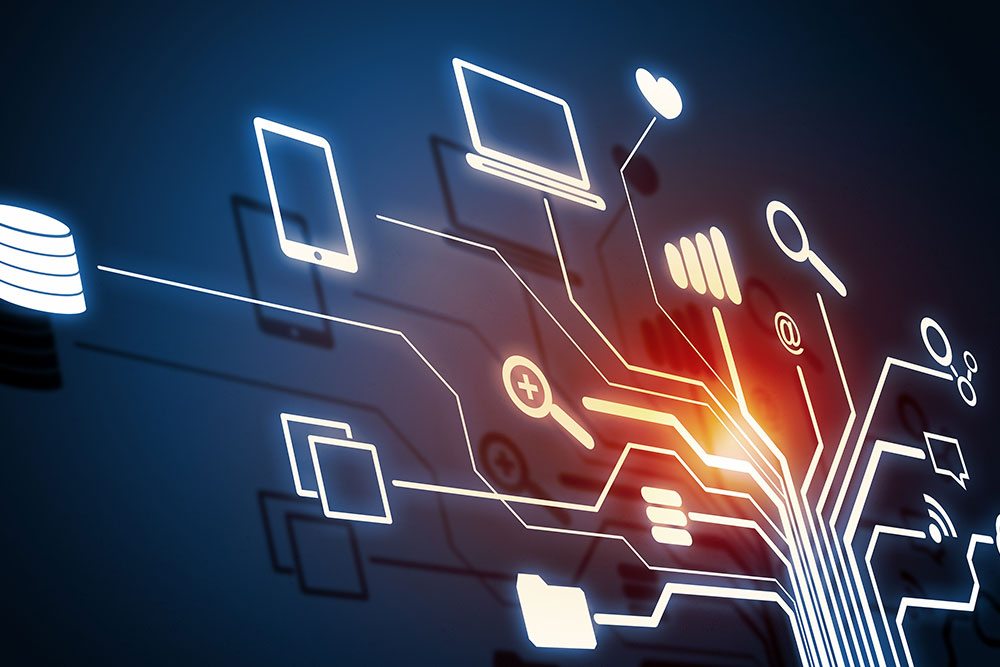Electronic discovery (or “eDiscovery”) is the process of identifying, preserving, collecting, analyzing, reviewing, and producing electronically stored information (ESI). Structured and unstructured data analysis is at the core of eDiscovery. Even routine matters regularly involve hundreds of gigabytes of data that much be analyzed for relevancy and privilege.

Most often undertaken for litigation and regulatory compliance, eDiscovery processes and the underlying data mining technology are also deployed for internal investigations, due diligence, financial contract analysis, privacy impact assessments (including GDPR), and data breach responses. Undoubtedly, eDiscovery efforts are crucial to ongoing success in today’s modern corporation.
For effective eDiscovery, enterprises need to be able to search through information across their entire enterprise, including both structured (e.g. databases) and unstructured data (e.g. emails, images), and effectively analyze content. The best eDiscovery software will integrate with existing systems and litigation-ready policies. It enables targeted data collections, sophisticated culling and de-duplication. In addition, the capabilities of the best eDiscovery software includes AI-enhanced analysis, full review and tagging, automated redactions, and DIY productions.
Traditionally, the complexities of eDiscovery made outsourcing an attractive model. It was not uncommon for a corporation to retain dozens of different law firms and legal service providers (LSP) to handle their eDiscovery portfolio. In fact, a whole consulting industry sprung up entirely around managing the many vendors that handled different pieces of the eDiscovery workflow.
Advances in eDiscovery software and litigation support software have simplified the process. Nearly one in two corporate legal departments have employed a centralized, consolidated approach for hosting and managing discovery data. By taking eDiscovery in-house, corporate legal can carry out effective, rapid, and accurate eDiscovery processes that have a major impact on early stage collections. Considering that 70% of eDiscovery costs run through review, having targeted collections up front can significantly impact overall costs. In one case study, a corporate client that brought eDiscovery technology and processes in-house reduced the volume of data sent to their outside counsel for review by over 95%.
Overview of eDiscovery processes
Typically, eDiscovery runs from the time a lawsuit is reasonably anticipated through post-trial appeals. Simplified, the process looks something like this:
- Potentially relevant data is identified by attorneys and placed on legal hold or forensically collected in a legally defensible manner.
- Data is archived until legal advises it may be safely destroyed.
The best eDiscovery solutions feature advanced analytics that enable automated categorization, pattern identification, and trend spotting. AI and machine learning are also crucial components of modern eDiscovery software. For example, predictive coding technology leverages supervised, continuous machine learning to learn from human relevancy decisions and create data models that can prioritize likely relevant documents based on previous examples.
What are the benefits of eDiscovery software?
Depending on the size and priorities of an organization, the entire eDiscovery process, or elements of it, can be effectively handled in-house with the right eDiscovery solutions. A common deployment model for such organizations includes an Early Case Assessment (ECA) application for searching, identification, culling, and processing. Reporting is another growing trend, and corporate legal operations departments are collecting and reporting more key process metrics. While most contemporary corporations have some eDiscovery software in-house, they also retain law firms and legal service providers for the review of documents. A common model may include in-house collections, processing, and culling with a legal service provider conducting the review managed by the law firm overseeing the actual litigation or compliance project itself.
Increasingly however, advances in eDiscovery technology and workflows mean that enterprises are able to bring the whole eDiscovery process in-house, yielding several key benefits to business:
- Reduced costs
The data mining and data analysis capabilities of eDiscovery tools reduce costs across the board by enabling targeted collections and prioritized review.
- Budget predictability
Technology and internal staffing costs are more predictable compared to transaction, third-party project engagements.
- Empowered staff
eDiscovery tools give staff the tools they need to carry out tasks without reliance on third parties.
- Litigation readiness
Especially in sectors that are prone to a high level of lawsuits, in-house eDiscovery ensures that companies are ready to quickly respond and facilitates the smooth running of operations.
- Faster and more accurate review
eDiscovery solutions equipped with AI, predictive analytics, and machine learning find relevant information faster and with more accuracy than manual review.
- Meet compliance requirements
The best eDiscovery software should come with SLAs to meet compliance requirements for specific sectors.
What are the features of eDiscovery solutions?
There are a number of key components that you’ll find in the best eDiscovery software.
- Integration with existing systems
For the enterprise, connecting an eDiscovery solution to their existing content management system enables seamless eDiscovery at the source, minimizing risks associated with handling sensitive data. - Integrated advanced analytics
Keyword search and filtering on document attributes like MIME type, modified date, created data, owner, etc. are foundational tools for eDiscovery. They must be powerful, intuitive, and flexible. - Integrated data visualizations
Understanding the relationships between thousands of emails is a daunting task without an interactive communications map. The best eDiscovery solutions will map out sender/receiver patterns in addition to visualizing other key metadata attributes like activity over time. - Integrated predictive coding and machine learning
Predictive coding (otherwise known as technology-assisted review or TAR) brings AI to legal review, sweeping broad datasets and suggesting potentially relevant ESI based on prior learning. Predictive coding has been widely accepted and approved in courts around the world as a legitimate means of review. - Integrated redaction and production capability
Confidential or otherwise sensitive/personal data is frequent in eDiscovery. Such information needs to be redacted before being produced in an industry-standard output.
Why choose OpenText for eDiscovery?
OpenText™ is a top-tier global eDiscovery vendor, offering a suite of solutions—including text and content analytics, data mining software and litigation support software—to achieve litigation readiness through a comprehensive records, retention, disposition, and legal hold management strategy. Our solutions cover the entirety of the eDiscovery industry’s Electronic Discovery Reference Model (EDRM), starting with information governance and enterprise content management components.
OpenText Discovery Suite offers industry gold standard forensics and unstructured data analytics for searching, collecting, and investigating enterprise data to manage legal obligations and risk.



